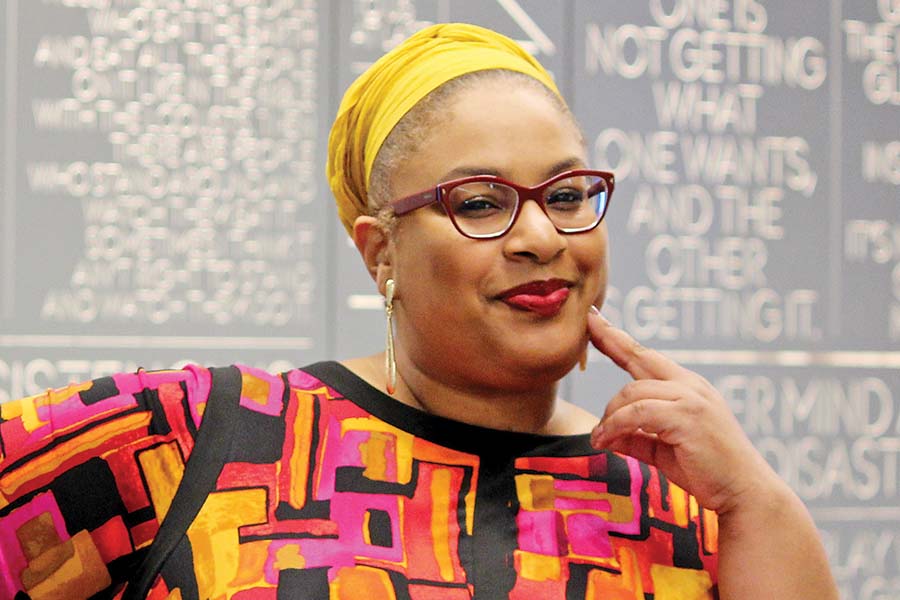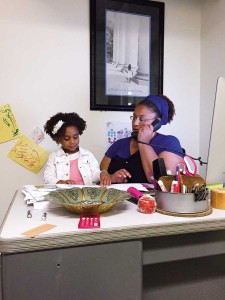The announcement that Hana S. Sharif will be the new artistic director of the Repertory Theatre of St. Louis—most commonly known as the Rep—has been just one in a series of signs of the extraordinary changing of the leadership guard now going on in the American theatre. From Maria Manuela Goyanes at Woolly Mammoth to Pam MacKinnon at ACT, from Stephanie Ybarra at Baltimore Center Stage to Flordelino Lagundino at Park Square, a new crop of leaders are bringing new visions and new promise to legacy institutions. Sharif, now associate artistic director at Center Stage, will succeed the Rep’s Steven Woolf.
ROB WEINERT-KENDT: Congratulations, Hana. Has it always been your aspiration or your plan to run a theatre?
HANA S. SHARIF: I think so. I started with a small theatre company when I was in college, and I would be wearing all these different hats, as you do—hanging lights, directing shows, taking the garbage out, raising money. And I remember thinking about four years in, oh my God, there has to be a better way to do this. How do those big theatres do it? So I was going to go to these multi-million dollar regional theatres and figure out the best practices. I thought I was going to steal the master’s tools and bring those tools home to my small theatre company. And pretty quickly, after I went to Hartford Stage, I fell in love with what happens when an arts organization has the opportunity to create an ongoing dialogue with a community. It was not just about one story, but about the way you curate a sequence or years of storytelling, how your conversation with the community evolves, and how the community gets the understanding of it all.
What tools did you pick up at that job?
What then-artistic director Michael Wilson did for me, that I still say is probably the greatest gift anyone has given to me in my career, in my first year he made me the artistic liaison to every department. Which meant I was in every education meeting, finance meeting, development meeting, marketing, production, both board and staff. Part of my job was to articulate artistic vision to each of those departments in the language that they speak, and then also to be able to bring back to executive leadership some of the tensions and concerns that arose from that vision and those plans and to help make sure that everyone was being heard. It allowed me to become fluent in all of the languages necessary to run a regional theatre, and has helped make me the producer that I am.
You’re an administrator but you also work as a director. How do you balance the two?
I’m part of a generation of artists who are both artists and administrators. Those of us who’ve been raised in the American regional theatre have learned to be great producers in addition to directors or playwrights or dramaturgs, and that balance of skill sets has been part of what I think has continued to motivate me. We started so many conversations year after year at the national conferences about the changes in the economy and the changing artistic ecosystem, not just within our field but in others, and the idea that we are all living in these models that no longer work. One thing I found to be so interesting is that I would sit in these associate artistic director meetings with peers who had really interesting ideas about the future that weren’t being tested yet. There was this sense of, what happens when my generation of artists actually gets to step into artistic directorships and really start curating, being the architects of new programming ideas, or of just evolving the model?
I think about the kind of historic moment of transition within the American regional theatre. We’ve never seen a leadership shift this dynamic in the history of the regional theatre movement. I’ve been so excited, both before my announcement and after my announcement, about other peers who are stepping into these positions. It just makes me really energized about the future. Because I’ve sat in rooms, like you have, with these same artists, listening to the hopes and dreams and some really innovative thinking. It’s just a fertile new moment for our field, and I’m so proud to be part of it.
It’s an exciting thing to be writing about too. Speaking of arts vs. administration, how much directing do you think you’ll be doing in St. Louis?
That’s a good question. There are extraordinary producers who are not directors, and extraordinary directors who do not have the skill set to be a producer. But I’ve had the luxury in my career of working with multiple artistic directors who were both, and I think that there’s a real strength in that. Communities really rally around learning and connecting and trusting the artistic impulse of their leadership, and when you can put that artistic impulse onstage, it’s something very tangible for an audience to connect to, for an audience to bond with and to understand. So I hope that I will have the opportunity to really share myself as an interpretive artist tremendously with the St. Louis community. It’s actually a really big season there: There are six mainstage shows, three studio shows, three touring shows under the Imaginary Theatre umbrella. So there are 12 opportunities within the subscription season, and I imagine that I’ll direct a couple times a year for sure at the Rep. I’m also incredibly excited to bring in the most talented, interesting, engaging, innovative voices of the American theatre. It’s a great opportunity for us to be able to show the world we live in right now onstage.
What are your impressions of St. Louis?
I would say that my time in Baltimore has really prepared me for St. Louis. They’re two cities with very similar demographics, and both cities that have been at the forefront of some important conversations about who we are as a nation. And the work I’ve done in Baltimore, specifically under Kwame Kwei-Armah’s leadership, was about being a very real presence within the community, using art to open conversations and understanding the role that we have institutionally in the healing of our community, and also in the surfacing of these important conversations. So much work has gone into how we partner our great art with this concept of radical access.
I haven’t had a lot of time in St. Louis. I was so fortunate that this year’s TCG conference was in St. Louis, so I got to spend that whole week there. It’s beautifully diverse, though I think that—first impressions here—it is a city that’s still segregated in many ways. The lines between the communities feel clearly delineated. I may find that not to be the truth as I dig in, but that’s what I see on the surface. Again, I find that not too unfamiliar. What I see is a community rich with possibility.
I have to ask, does your daughter still have a little desk next to your big desk?
She does. She spends a little less time in my office just because she has her own life; she’s seven now. But her favorite thing is still to come to this office. What I so value about my time here at Center Stage, and it’s a type of environment I hope to be able to foster, is that my daughter feels like this is her second home. She’s grown up in the theatre. I look at the little independent human being she is, and I know that part of her confidence has come from growing up in a place where we make magical things happen every day.



